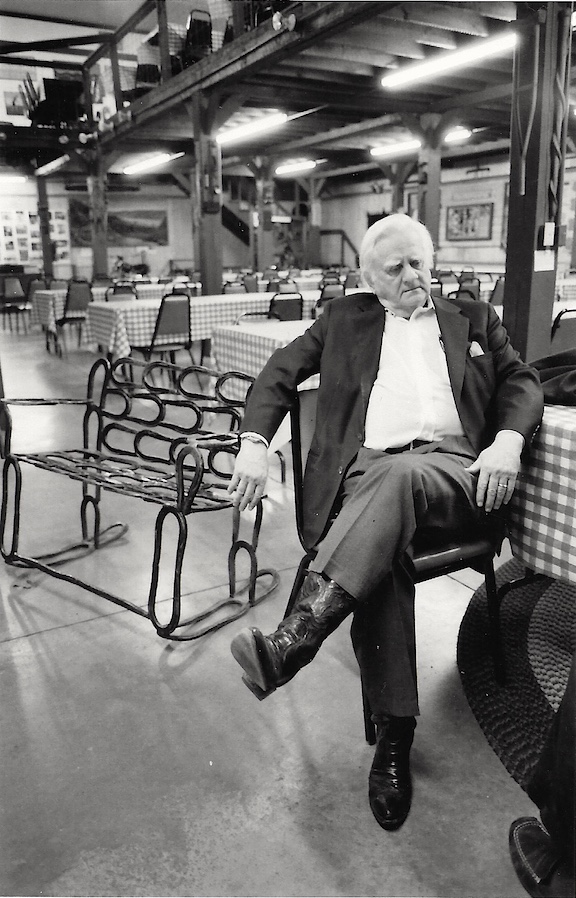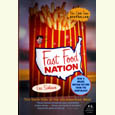The Shape Trilogy Comes Full Circle
Celebrated children’s author Mac Barnett discusses his new picture book
It has been two years since Mac Barnett debuted the first book in his Shape Trilogy, a series of minimalist children’s books about the merry mischief-making and playful dynamics of three geometric friends. Triangle arrived in 2017; Square appeared last year; and now Circle wraps up the trilogy with her own story, one in which all three shapes play hide-and-seek near the waterfall where Circle makes her home.
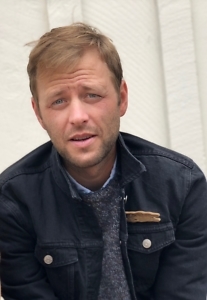
When Triangle disappears after disregarding Circle’s rules for the game, Circle overcomes her fear of the dark to track down her friend. Just as with the first two books in the series, Circle is a curious mixture of picture book and board book, and it showcases the distinctive humor of both Barnett and the trilogy’s illustrator, Jon Klassen.
Barnett returns to Nashville—three years ago, he spoke with Chapter 16 about How This Book Was Made—to discuss the final book in this beloved trilogy. Barnett recently answered questions via email about the new book, the series as a whole, and the joy of intellectual debates with children.
Chapter 16: Can you talk about the origins of the Shape Trilogy? Didn’t it all begin with some of Jon Klassen’s drawings?
Mac Barnett: Yep. In the beginning, there were whole civilizations of triangles, squares, and circles, designs for a video game Jon had been mulling. But for a few different reasons, Jon and I started talking about taking these societies and distilling them to three individuals: Triangle, Square, and Circle. They existed first as drawings, and then as characters. We spent months talking about their personalities, their habits, and their opinions of each other before we set to telling a story about them. We wanted these three books to feel like glimpses of much fuller lives and for each story to be imbued with the traits of the titular shape.
Chapter 16: These stories tap directly into the good, the bad, and the ugly (which is to say, the honest) dynamics heard on any playground anywhere.
Barnett: Thanks, Jules. I try to write about kids as they are, not as adults want them to be.
Chapter 16: The legendary editor Ursula Nordstrom once said that the best children’s books retain “a direct line to one’s childhood.” How vividly do you remember your childhood and its relationship dynamics?
Barnett: That Nordstrom quote has always stuck with me. It so aptly identifies a trait common to the otherwise very different authors and illustrators I know—at least the good ones. I do get dismayed when I see how remote the business of children’s books can get from actual children.
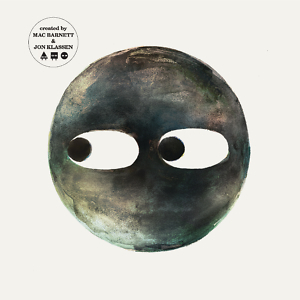 Chapter 16: I love how Jon always paints Circle floating, never touching the ground, never actually rolling. Then again, in the second book, you write that she “floated by.” Does she ever sit still? Is she actually perfect, as Square believes?
Chapter 16: I love how Jon always paints Circle floating, never touching the ground, never actually rolling. Then again, in the second book, you write that she “floated by.” Does she ever sit still? Is she actually perfect, as Square believes?
Barnett: Well, Square thinks Circle is perfect. And Triangle probably thinks Circle is perfect. Circle, I think, also thinks Circle is perfect.
Chapter 16: Going back again for a moment to last year’s Square, the second book in the trilogy: do you think Square has gotten over his imposter syndrome?
Barnett: Public acclaim tends to exacerbate impostor syndrome, not cure it, at least in my experience.
Chapter 16: When you share Square with children, are there any who respond that, yes, Square is a straight-up genius?
Barnett: Yes! At least a third of the kids we read to think Square is a genius. Often it’s a fifty-fifty split. They talk about what art is, what genius is, the relationship between intention and creation. We get into real artistic debates, and I can assure you that the arguments children muster are as thoughtful and incisive as the theories bandied about by critics.
Chapter 16: Is there a shape you most identify with, or is there a little bit of Triangle, Square, and Circle in you?
Barnett: I should probably just say Triangle, but honestly you have to feel pretty deeply connected to anyone you write about, even (especially?) sentient shapes. But sure, Triangle.
Chapter 16: What has been for you the biggest joy in creating this trilogy with Jon?
Barnett: Jon is one of my best friends, and I think when we work on books together we push each other to places neither one of us readily goes on our own.
Chapter 16: Circle is the final chapter of the series. Are you sure we won’t see others, especially given that a mystery shape appears at the close of Circle? Maybe if we fans ask nicely?
Barnett: You know, the term “Shape Trilogy” came from the publishers. Jon and I always just called them the “Shapes Stories.” So, you know, who knows?
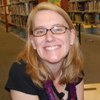
Julie Danielson, a former school librarian, blogs at Seven Impossible Things Before Breakfast and writes about picture books for Kirkus Reviews, BookPage, and the Horn Book. Her first book, Wild Things! Acts of Mischief in Children’s Literature, was published in 2014.


